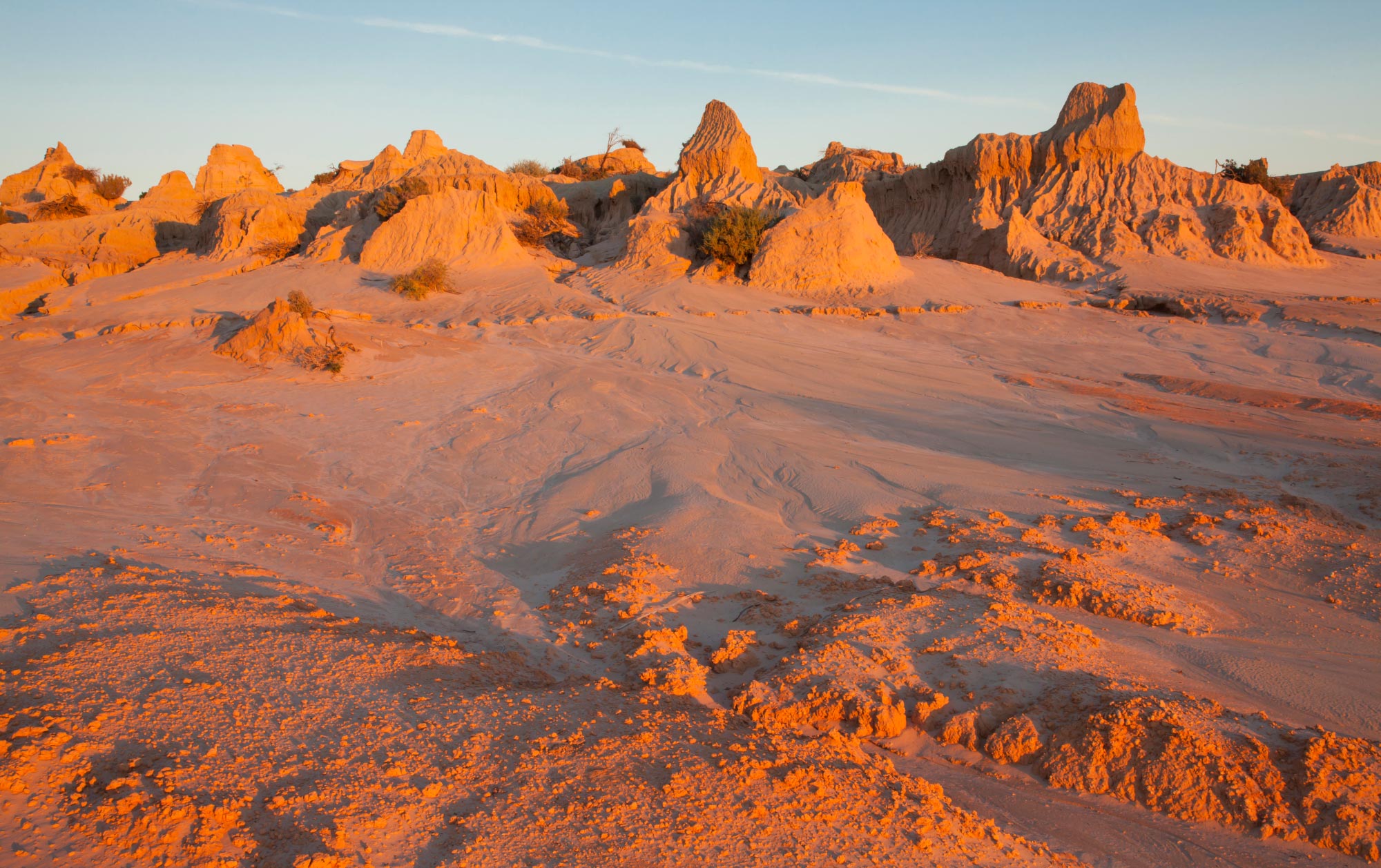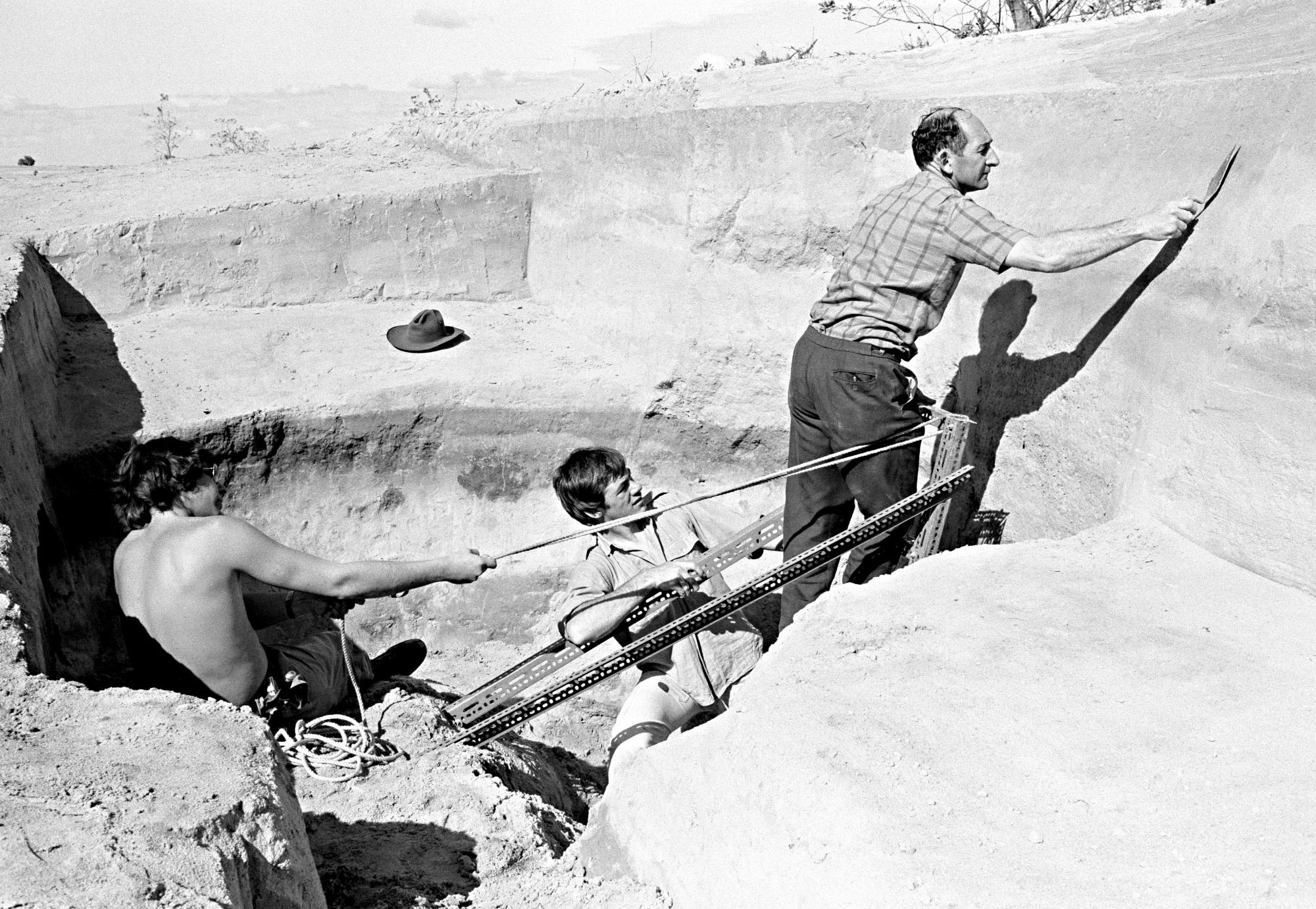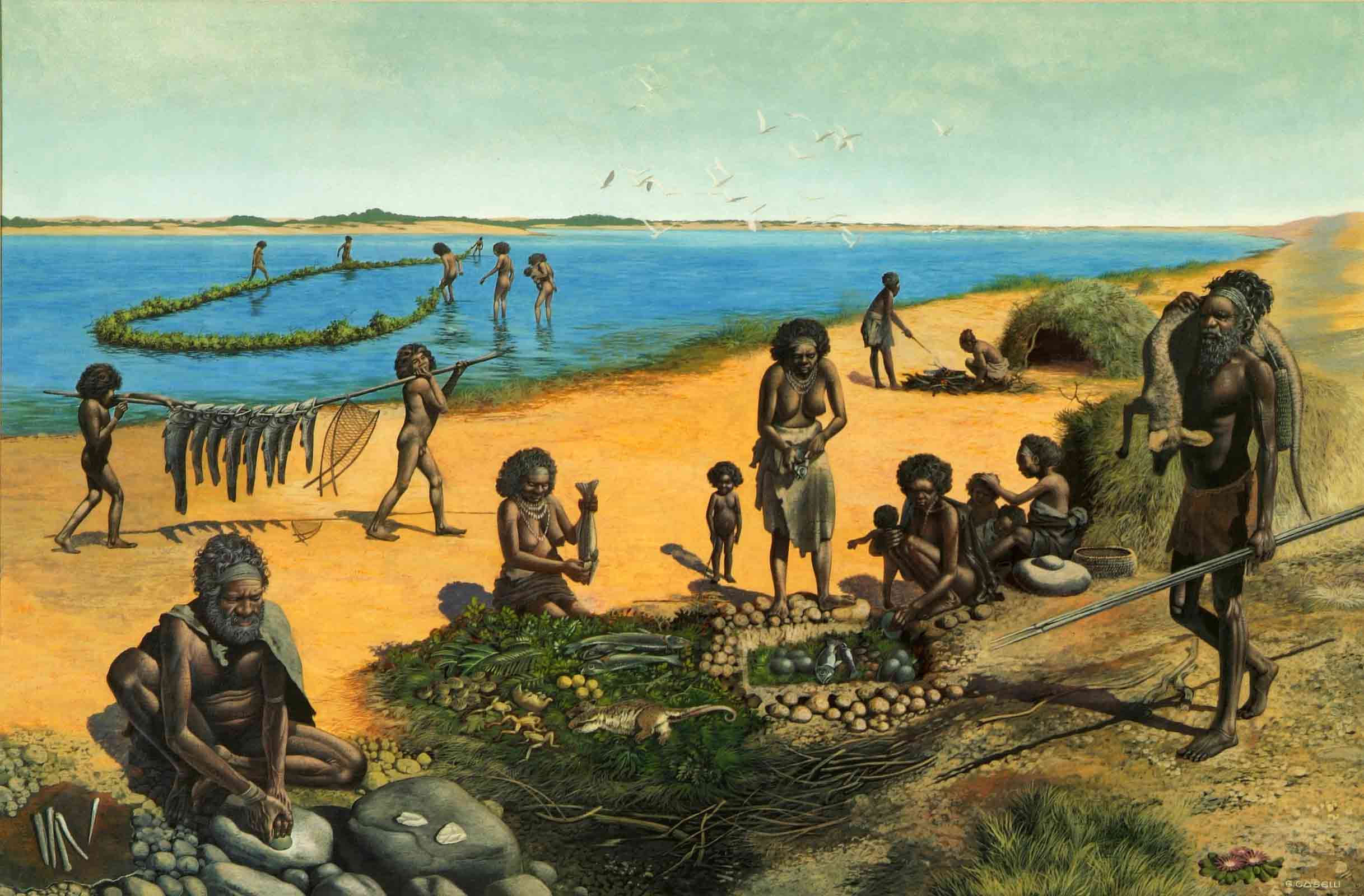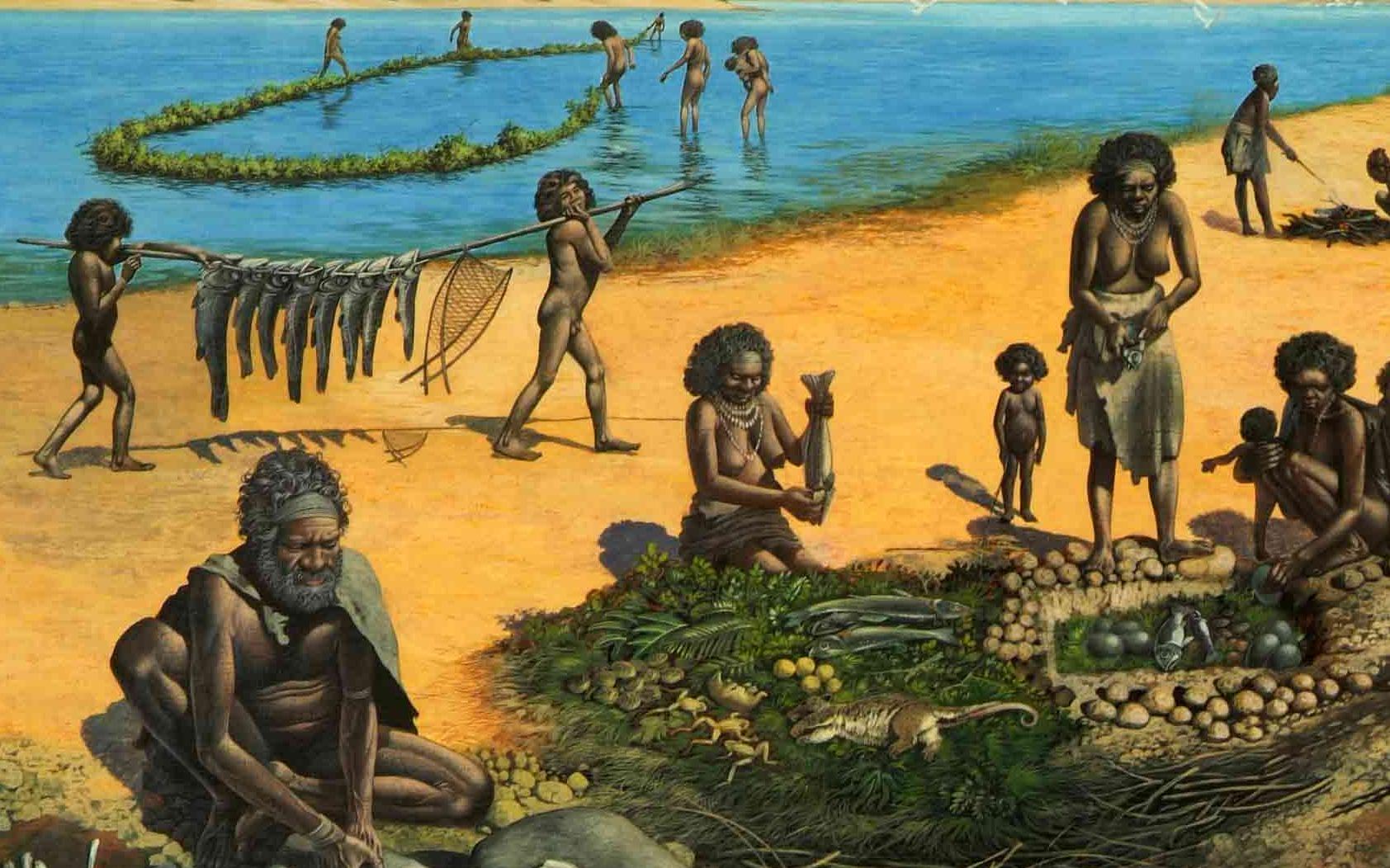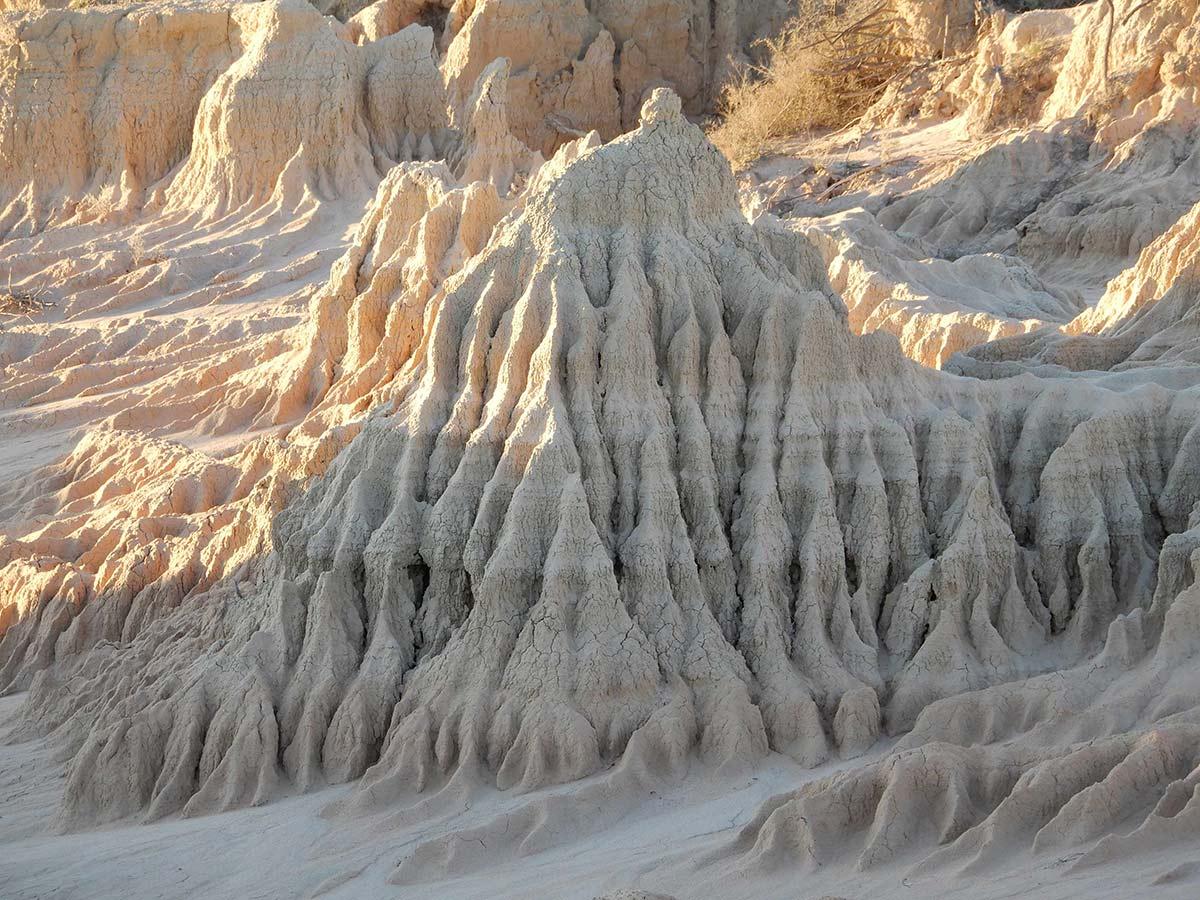Learning module:
Deep time history of Australia
Investigation 1: Finding out about Mungo Lady
1.4 Is Lake Mungo a significant ancient site?
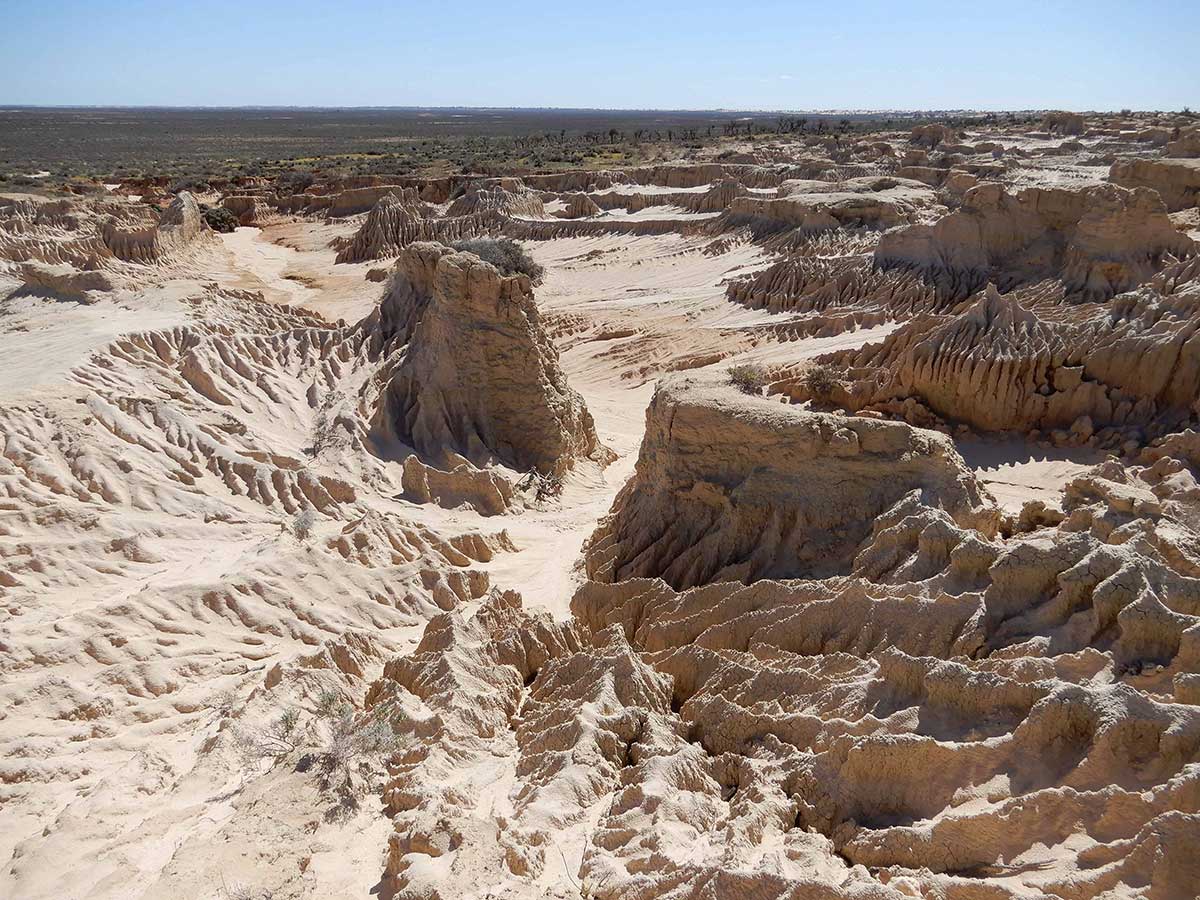
An international organisation called the United Nations Educational and Scientific Organisation (UNESCO) has nominated many places in the world as World Heritage sites. These are accepted as being places that are of outstanding universal value. The Willandra Lakes Region, including Lake Mungo, has been listed as a World Heritage site since 1981, and is one of only 20 World Heritage sites in Australia.
Here is a list of the criteria that UNESCO uses to make a decision about whether to accept a place for World Heritage listing. A site can be listed for its cultural value or its natural value or both.
1. There are 10 criteria for World Heritage sites, and for acceptance a place must meet at least one of them. Look at the criteria and decide which apply to Lake Mungo. Explain your reasons.
| Cultural criteria | Does it apply to Lake Mungo? (Yes or no) | How? |
| i. To represent a masterpiece of human creative genius. | ||
| ii. To exhibit an important interchange of human values, over a span of time or within a cultural area of the world, on developments in architecture or technology, monumental arts, town-planning or landscape design. | ||
| iii. To bear a unique or at least exceptional testimony to a cultural tradition or to a civilisation which is living or has disappeared. | ||
| iv. To be an outstanding example of a type of building, architectural or technological ensemble or landscape which illustrates (a) significant stage(s) in human history. | ||
| v. To be an outstanding example of a traditional human settlement, land-use, or sea-use which is representative of a culture (or cultures), or human interaction with the environment especially when it has become vulnerable under the impact of irreversible change. | ||
| vi. To be directly or tangibly associated with events or living traditions, with ideas, or with beliefs, with artistic and literary works of outstanding universal significance. (The Committee considers that this criterion should preferably be used in conjunction with other criteria). | ||
| vii. To contain superlative natural phenomena or areas of exceptional natural beauty and aesthetic importance. | ||
| viii. To be outstanding examples representing major stages of earth’s history, including the record of life, significant ongoing geological processes in the development of landforms, or significant geomorphic or physiographic features. | ||
| ix. To be outstanding examples representing significant ongoing ecological and biological processes in the evolution and development of terrestrial, fresh water, coastal and marine ecosystems and communities of plants and animals. | ||
| x. To contain the most important and significant natural habitats for in-situ conservation of biological diversity, including those containing threatened species of outstanding universal value from the point of view of science or conservation. | ||
United Nations Educational, Scientific and Cultural Organization, The Criteria for Selection, https://whc.unesco.org/en/criteria/, viewed 29 September 2020
2. Thinking about your analysis, why do you think Lake Mungo qualifies to be an official World Heritage site?
3. Do you think Lake Mungo qualifies as a cultural site, a natural site or both? Explain.
To see if Lake Mungo was accepted as a World Heritage site go to the UNESCO website.
4. Declaring a place a World Heritage site gives it some protection, but also increases the likelihood that people will visit it. How can tourism both harm and help a World Heritage site?
| How World Heritage can help a place | How World Heritage can harm a place |
|
|
|
5. What other problems do you think might exist in maintaining a World Heritage site?
6. Australia has a number of World Heritage sites. Do some research to create a list of these, and then prepare a report on why one of your choices would be considered so valuable.
7. In 2019 a new World Heritage site was declared — the network of stone eel-traps created by the Gunditjmara people of south-west Victoria, at Budj Bim. How does this area meet the criteria?
Read about this Defining Moment in Australian history: 2019 Aboriginal engineering — Budj Bim Cultural Landscape given World Heritage status and find out which of the World Heritage criteria it satisfied.






